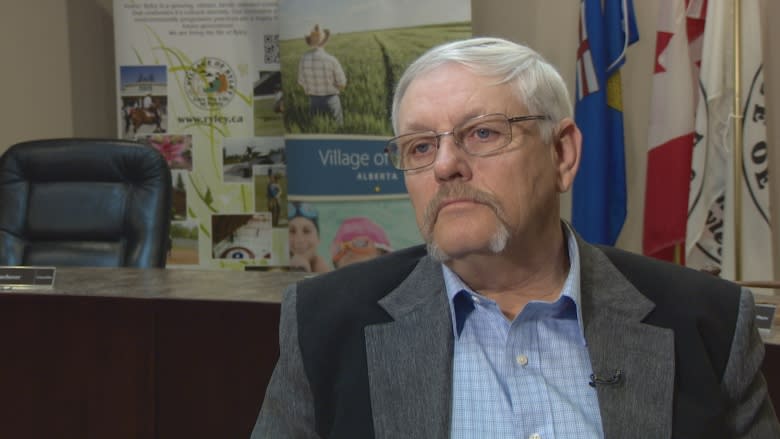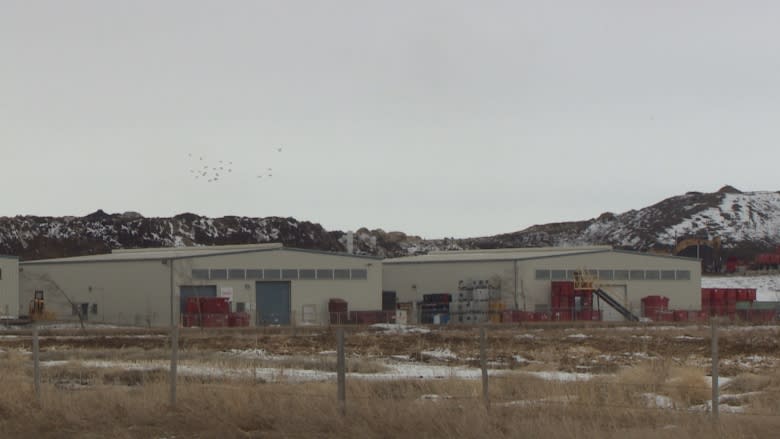Expansion of hazardous waste landfill worries Ryley residents
An expansion planned for a hazardous waste landfill and storage facility located in Ryley, Alta., southeast of Edmonton, has some area residents concerned for their health and the environment.
"We live here, and this thing is going to be here until the end of time," said Brian Strilchuk, the chair of the Ryley Public Advisory Committee, a citizen group formed in 2012 to defend the interests of the area.
"We want to make sure that it's safe, period."
Clean Harbors owns the facility, which has been operating within the limits of the Village of Ryley since 1991. The village, 90 kilometres from Edmonton, has a population of less than 500.
Hazardous waste from petrochemical and other industries is stored and treated at the facility.
Strilchuk isn't opposed to the expansion, but is calling for an independent assessment of the project.
"Let us know that everything is safe, because people get complacent and mistakes happen."
Change to design
The current facility will reach its capacity within five years. Clean Harbors wants to expand to the north, on 160 acres of land that it already owns.
"It's up to us to provide the design that meets all the requirements that are laid out by Alberta Environment and Parks, and we feel that in our application, we have met those designs," said Michael Parker, the vice-president of Canadian environmental compliance for Clean Harbors.
The company's expansion application to the province is currently in its last phase, having entered the submission period where the public can voice their concerns.
The new waste storage cells will be built between four and seven metres below grade level, a change that has local residents worried about possible water contamination.
"This is nasty stuff that they are putting into the ground, and it's below the shell of ground water table," said Strilchuk.
Contamination risks are low when waste management technology is properly used, according to Daryl McCartney, a professor of environmental engineering at the University of Alberta.
"We've learned to isolate the material that we're putting in these cells from the environment," said McCartney.
Independent review
Strilchuk has asked for an extension to the submission period so the Village of Ryley can conduct its own independent assessment.
He said the language in the application is technical and hard for ordinary citizens to understand.
"We want someone, an independent body, an independent consultant, to review what's going on there. To tell us, is it safe? Do we have a concern?"
The Village of Ryley supported the request, and the province has granted an extension until May 31, 2018.
The mayor of Ryley, Terry Magneson, told CBC village funds will be used to pay for an independent assessment.
Council approved the request Tuesday and will be asking an engineering firm to analyze Clean Harbors' application at a cost of around $22,000.
"If that satisfies the residents, especially those that are concerned, that's always a good thing," said Magneson.
McCartney agrees that an independent look at the application will help reassure the local population.
"It always helps in the relationship building. It starts to build a two-way dialogue between the technical and the local community."
Oversight from the province
Magneson said Clean Harbors is a good corporate citizen, and he trusts that the application followed the province's regulations.
"All the information that we've received shows that Alberta Environment has done it's due diligence," said the mayor.
Strilchuk said he doesn't doubt the science behind the design, or the work of the province.
Still, he wants Alberta Environment and Parks to increase its monitoring presence in Ryley, as opposed to relying on local residents to flag concerns.
"We haven't got the technical expertise to know that something is wrong," said Strilchuk.
The province's current monitoring approach is hands off. Clean Harbors conducts its own environmental tests and submits the results annually.
McCartney said the system puts the onus on the operator, but that citizens can also get involved.
He suggests that Clean Harbors regularly explain and share the results of its monitoring with a community based committee.
"So you're seeing the monitoring yourself in a routine program. You're getting the confidence that it's being run properly," said McCartney. "I think that would be the minimum that I would expect."





